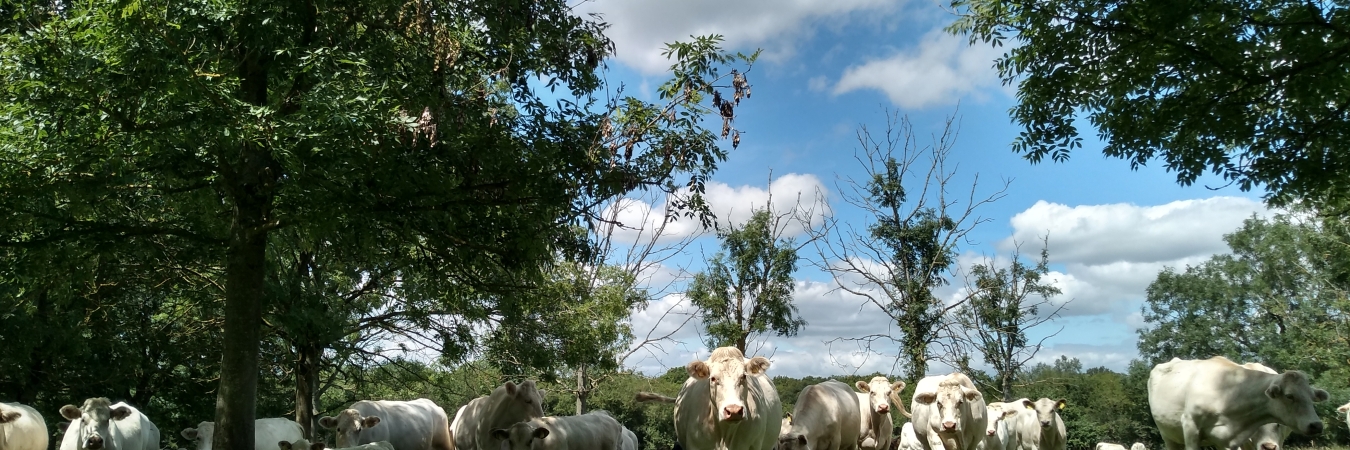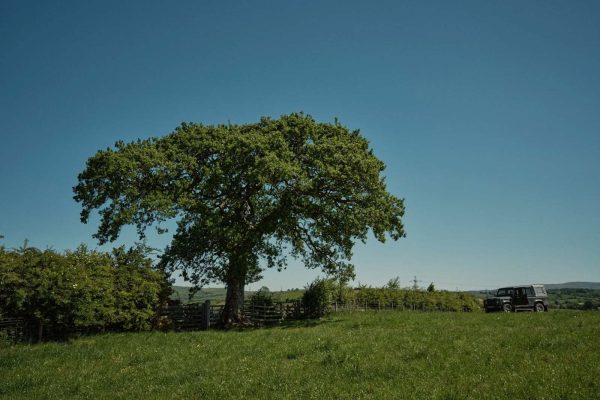Management and maintenance of agroforestry systems: Lessons from a 30 year old ash silvopastoral trial
The fifth and final AFINET workshop for the UK silvopasture sub-group took place at Claydon Estate in Buckinghamshire in early July and was well attended by a mixed and engaged group. The workshop, supported by the Woodland Trust, was held in the morning and a training session on agroforestry for Woodland Trust advisors held in the afternoon, with both groups crossing over at lunchtime
The day started with an introduction to silvopastoral systems in the UK by Jo Smith from the Organic Research Centre to set the scene, Jo also introduced and showed some of the key results from the Loughgall long term silvopasture trial in Northern Ireland. This was followed by a discussion led by Stephen Briggs from ABACUS Agriculture around experiences of planting and managing an agroforestry system in the UK with an excellent presentation from Richard Gantlett, a farmer in Wiltshire, sharing his experiences of planting a trees on his farm and introducing his livestock to his existing hedges and woodlands. AFINET project outputs and dissemination materials and were presented, including the user interactive searchable Knowledge Cloud containing links to all previous workshop presentations and materials, the AFINET website and the developments to the Farm Woodland Forum website. Video footage from the day can be viewed here or below.
We then headed out to visit the ash silvopasture trial. The tour was led by Professor Steve Newman who was instrumental in the establishment of the trial and has been conducting research on the trial over the last 30 years. The trial was planted in 1987 and consists of two blocks of 100 ash trees planted at two different spacings; one block at 400 trees per hectare and one block at 100 trees per hectare. The area is currently rotationally grazed by cattle. We were able to see that the lower density planting still had a productive and healthy sward growing underneath it and the grazier was still paying market rates for the use of this area. Steve explained how the timing of the tree leaves returning and a full canopy developing was key to allowing the pasture growth in spring, with 60% of the sward productivity occurring in a time when the ash had no leaves.
The understory of the higher density planting was dominated by unpalatable species (nettle and thistles). Steve explained that in the higher density planting, his research had shown that pasture production had largely stopped by year 10, the area was however still being used by the cattle for shade in summer and shelter in winter. There was some discussion in the field about how the trees were protected from browsing damage. The initial rabbit guards were ineffective at protecting the trees from sheep and were replaced with wire mesh guards, then from 5 years these were removed and an abrasive paint was used to coat the tree stems. This paint showed good results – discouraging animals browsing the trees or chewing the bark. Steve also emphasised the importance of deciding on the product that you want when you are deciding what tree to plant and growing the product not the tree. We also talked about the importance of planting trees grown from good genetic material; many of the ash trees we were looking at had relatively poor growth and form and were a good example of trees grown from poor seeds.
The take home message was that these workshops been really successful in getting people together, talking about agroforestry, learning from each other and sharing advice and innovative solutions to common problems. The Farm Woodland Forum will be taking forward some of the AFINET activities and the new FWF website will provide a link to project resources and the Knowledge Cloud, but in order to run more workshops and events we will need to secure some funding and this is something we will be investigating.
Sally Westaway works for the Organic Research Centre as an agroforestry researcher.
- Watch Stephen Briggs (Whitehall Farm) discuss management & maintenance considerations when implementing a silvoarable system.
- Watch Richard Gantlett discuss the benefits and challenges of implementing silvopastoral agroforestry on his farm in Wiltshire.
- Watch Jo Smith from the Organic Research Centre give an overview on silvopastoral systems in the UK.
- Watch Professor Steve Newman from BioDiversity International discuss the ash plantation they have implemented on the Claydon Estate in Buckinghamshire for cattle and wood.
Learn more:
- View an article by Professor Jim McAdam on the potential for agroforestry in Ireland here.
- Explore agroforestry-related content on Agricology here.






